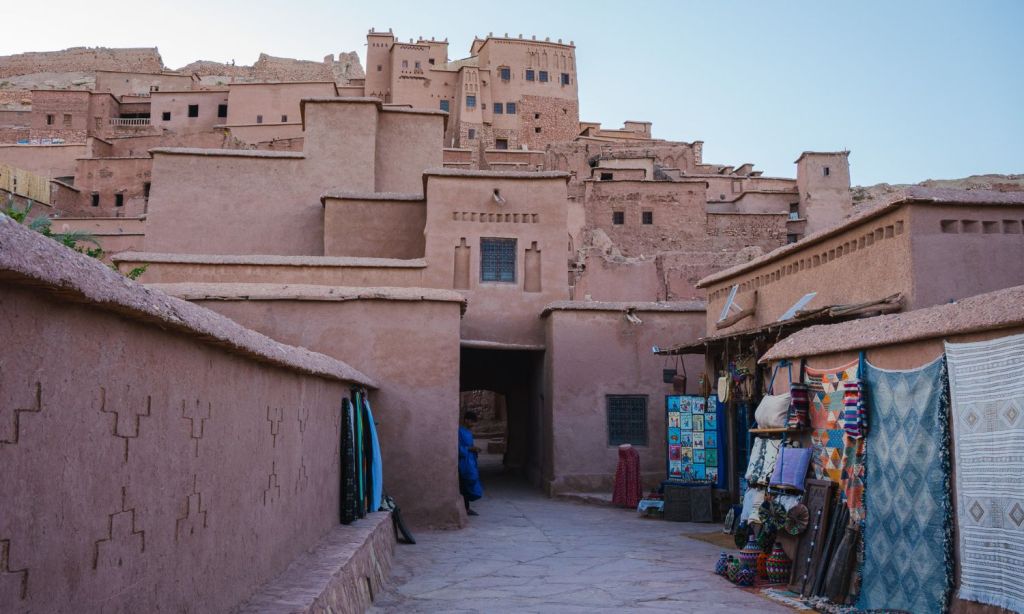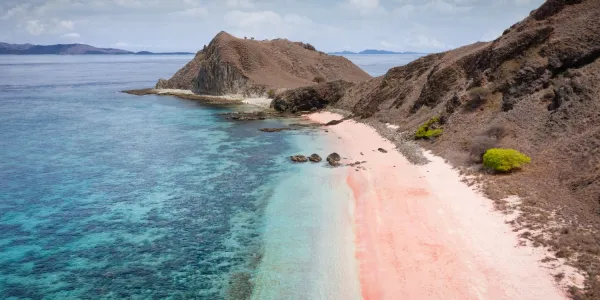Welcome to Where To Next?—a column by our intrepid globetrotting travel writer, Natasha Bazika. Her insatiable curiosity takes her to lesser-known destinations, away from tourist hotspots, and into the heart of diverse cultures and communities. She invites you to be a virtual companion on an exhilarating expedition, venturing beyond the beaten path.
For the longest time, I considered myself a solo traveller. The whole idea of group tours never really clicked with me. While my friends were off gallivanting through Europe on those bustling Contiki buses, I was in New York, doing my thing and travelling at my own pace. I was convinced that my best adventures were the ones I tackled solo. Not to mention, I’ve always seen tour groups as a way of “ticking the boxes.” You hop on a bus and spend 20 minutes at the Colosseum before you’re whipped to the next tourist trap. That type of travel doesn’t appeal to me; I want the local experience. But what is the local experience?
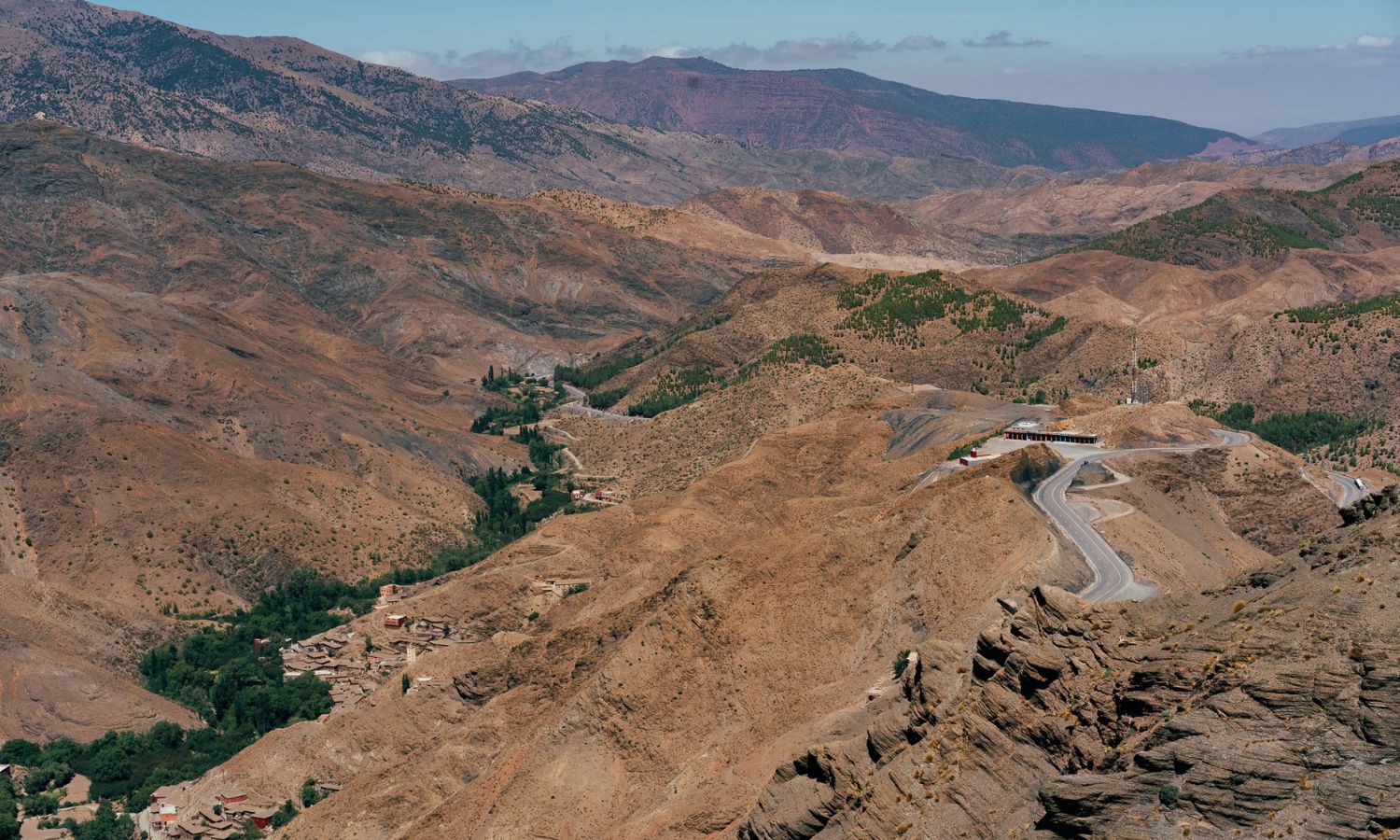
I received an invitation from Intrepid, an adventure travel company specialising in small-group, guided tours to places around the world. They asked me to join them on a trip to Morocco. It was one of those offers you can’t refuse, so I said yes and hopped on board for a group adventure. Little did I know, it would add a whole new palette of colours to my life—the shades of camaraderie and the excitement of shared exploration that I hadn’t realised I was missing.
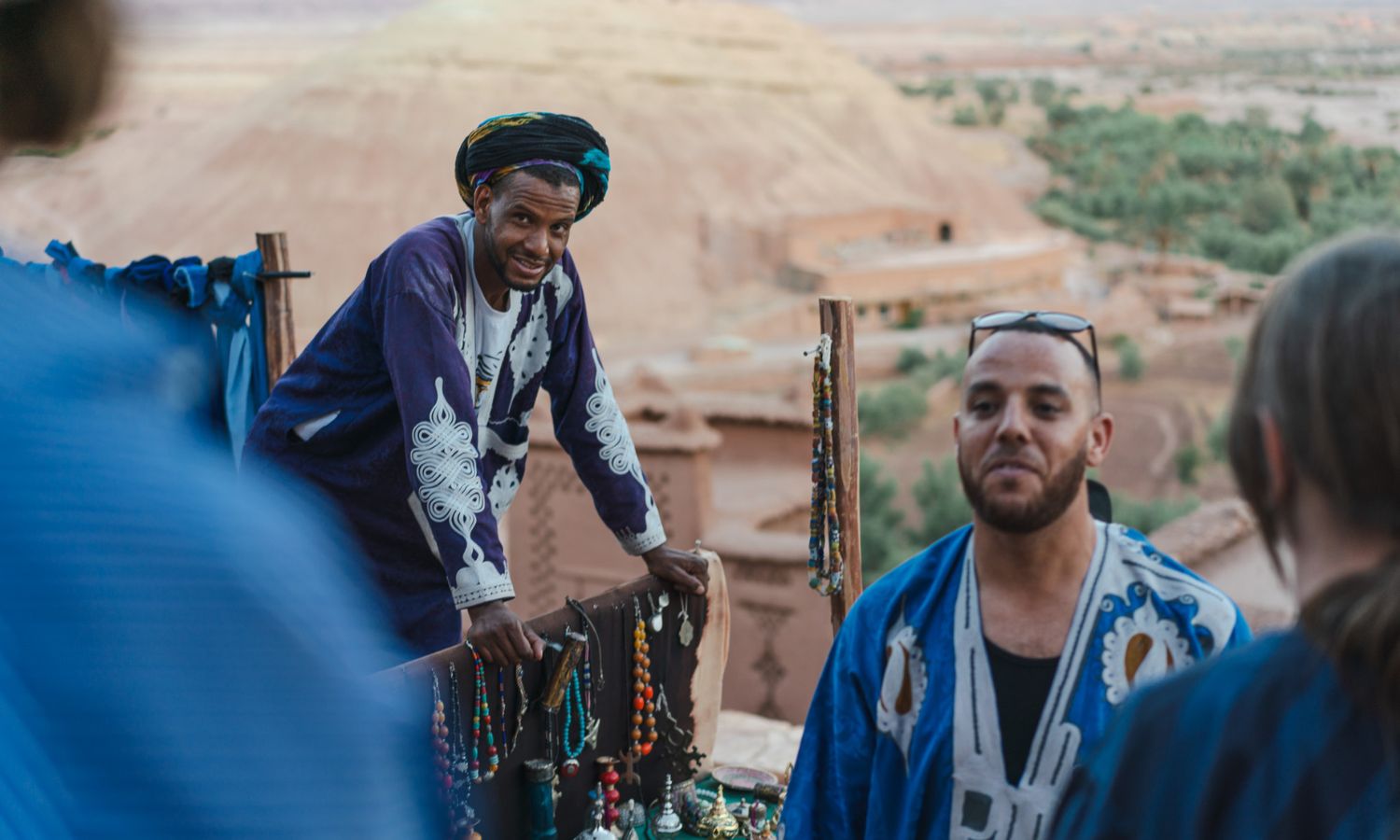
The Local Lens
Morocco had always been on my bucket list, likely for the same reason as many others—the colours, the culture, and the architecture. Prior to visiting, my knowledge of Morocco was largely confined to bustling Souks and tantalizing spice pyramids. Concerns were voiced about safety, particularly for a solo female traveller, but as I discovered, a lot of that worry was unfounded. Although Morocco, like any other place, demands a degree of vigilance and common-sense precautions, travelling solo in Morocco presents distinct challenges.
The language barrier can be quite formidable, with English not as prevalent as in more tourist-driven destinations such as Paris. Communicating becomes particularly challenging when engaging in haggling at bustling markets or attempting to order a meal at local restaurants. Morocco’s vast expanse, spanning from the High Atlas mountains to the endless Sahara dunes and the Mediterranean shores that lap the ruins of 13th-century castles, adds another layer of complexity. Not to mention, traversing the lengthy, meandering roads that cross this diverse terrain requires a confident and experienced driver. Here is where a local guide’s expertise truly shines.
Brahim Hanaoui, our Intrepid guide, was more than just a source of information. He was a bridge to the soul of Morocco. With him and seven others, I ventured beyond the surface of this captivating land, peeling back layers of culture, history, and tradition that I would have missed if I had chosen to explore independently.
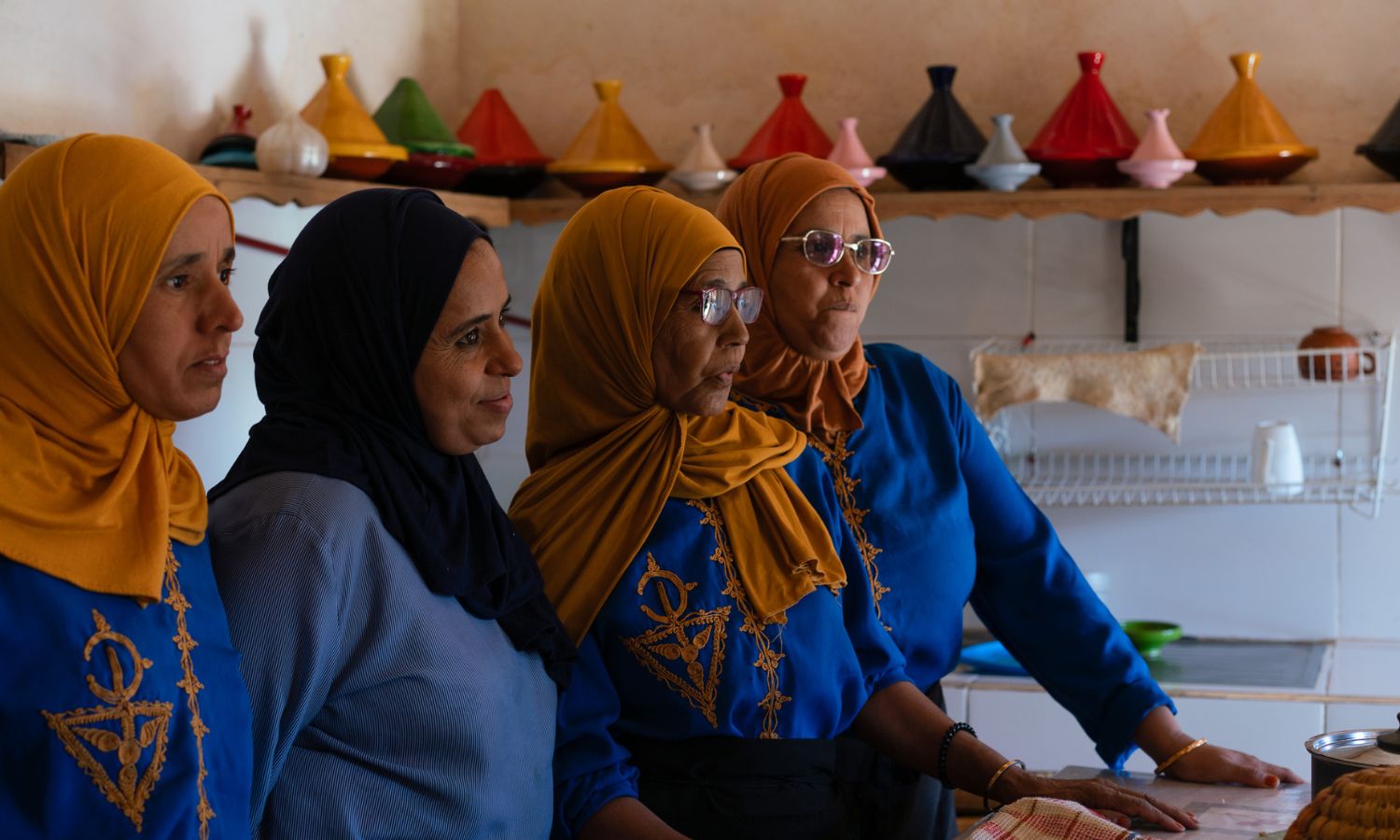
The Feminists Living in the High Atlas Mountains
At the heart of Morocco is the High Atlas Mountains, a chain of towering mountains that form the Atlas Mountain range, extending over 900km across Morocco, Algeria, and Tunisia. However, the High Atlas is the most famous section of the chain, with its mighty snow-capped summits glistening in the North African sun and countless villages sprayed across the range. Driving on the roads is an adventure in itself. There are endless views that change every few hundred metres, and villages you drive through, including a town dedicated to BBQ. Aptly named BBQ Town, it’s a great place to pick up a road trip snack or stretch the legs.
Our initial destination is the legendary Ait Ben Haddou, an ancient mudbrick village and a UNESCO World Heritage site. This fortified village, or ksar, stands as a testament to the country’s rich heritage and has played a pivotal role in countless films and TV shows. Its earthen buildings and intricate construction are a striking example of traditional Moroccan architecture.
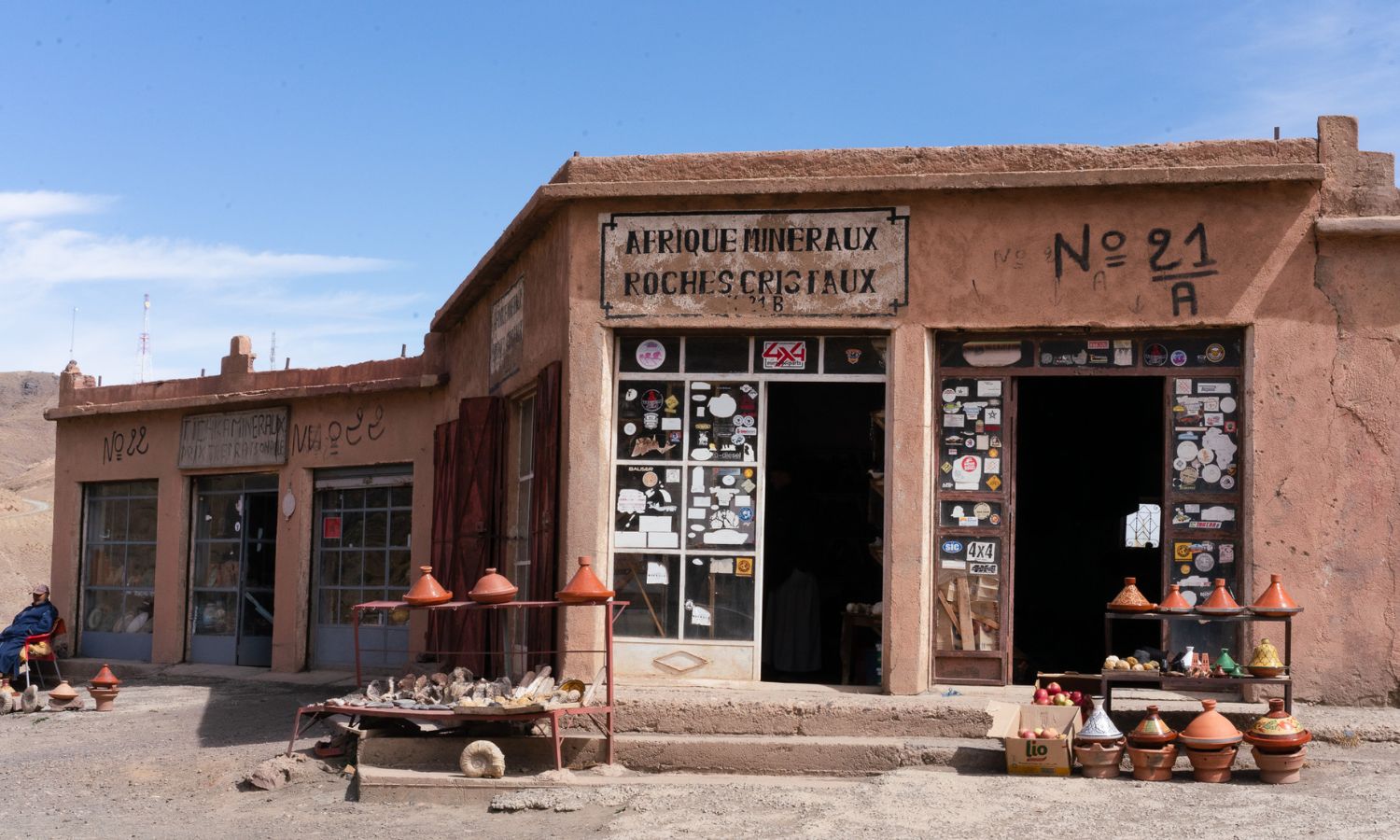
Perched atop a hill overlooking the Ounila River, this village once played a pivotal role as a vital stop on the ancient trade route connecting the Sahara to Marrakech. Today, it remains a living relic of history, with a few families calling it home, including a group of women who identify as feminists.
The Tawesna Association is a cooperative that supports over thirty women in the village, helping them generate income and enhance their livelihoods. Nadia Baa Bouz is one of these women. Similar to their counterparts in the Middle East, Moroccan society is burdened by deeply entrenched conservative and patriarchal traditions, particularly in remote villages where these customs persist unaltered.
As a result, approximately 80% of women of working age in the country remain unemployed, a number that continues to rise year by year. Consequently, women often find themselves reliant on the men in their lives, whether it’s their father, brother, husband, or uncle, not just for financial support but also for their physical and emotional well-being.
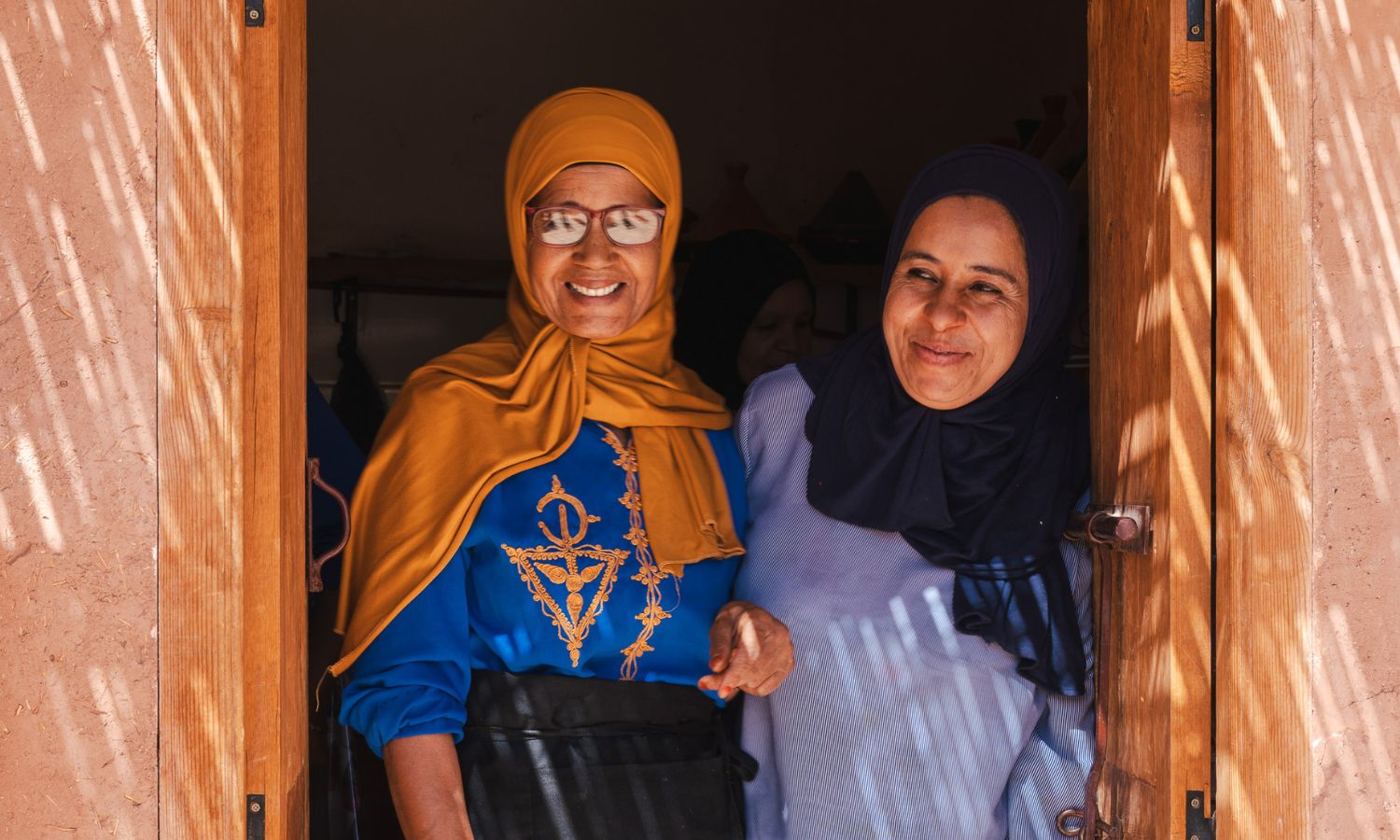
Starting the association was a formidable challenge, according to Nadia. “We managed to convince 150 women in the village, but most of their husbands opposed it, and only 40 women joined.”
Nadia, like most of the women in the cooperative, begins her day before sunrise, preparing meals for their families before heading to the open-air restaurant situated at the base of the 11th-century citadel.
Here, they fill the tables with tagines, bowls, and plates of traditional Moroccan cuisine, serving both locals and tourists who come to the citadel featured in Game of Thrones.
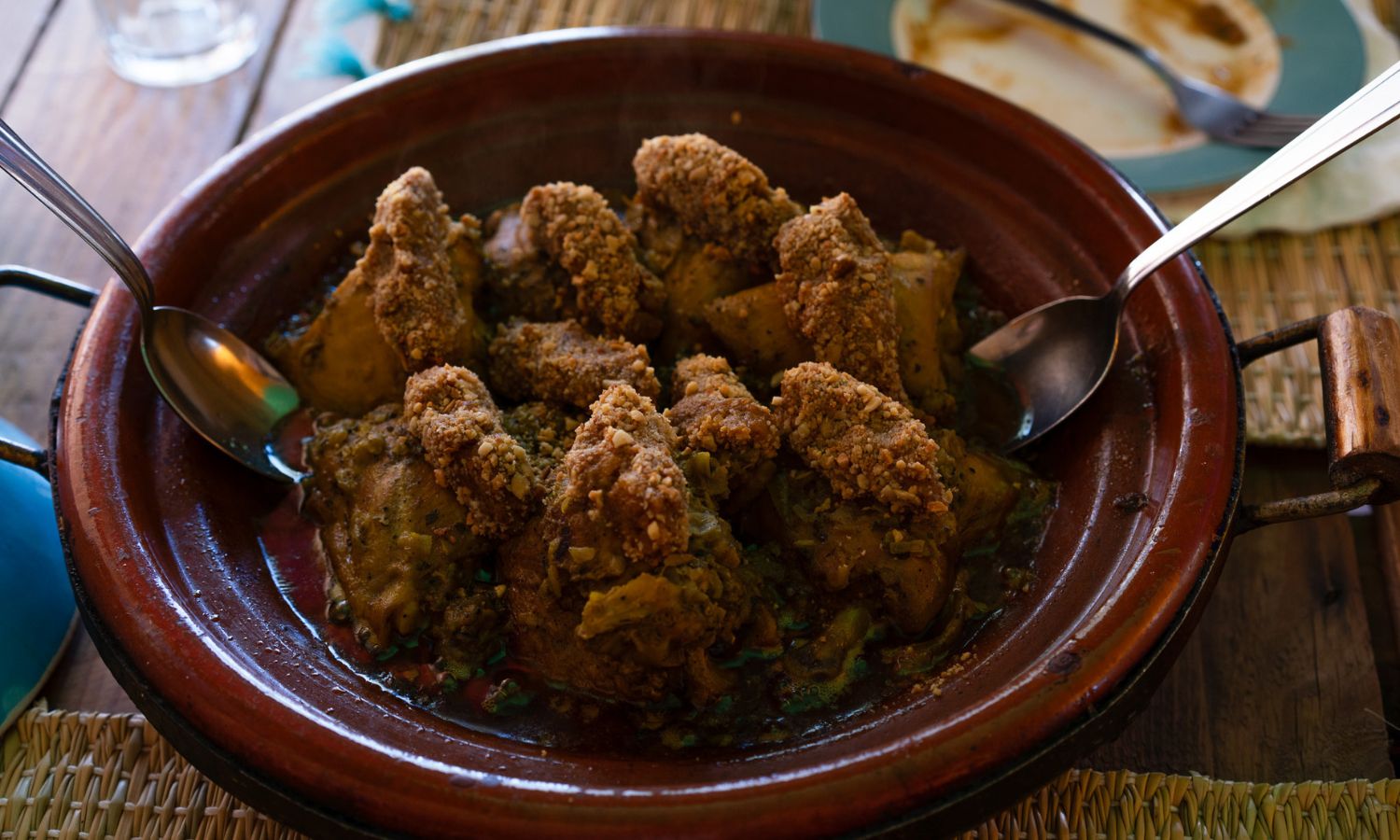
At lunch, Nadia lifts the lid of a deep red clay pot to reveal a sizzling chicken tagine, pasted in pureed pumpkin and injected with tradition. Next, she ferried out salads, tagines, baskets of bread and more. We sat down with her and broke bread together.
“For me, this kitchen, here, not at home, is like therapy,” Nadia remarks. “I can’t dwell on any problems I have at home because I’m content here.”
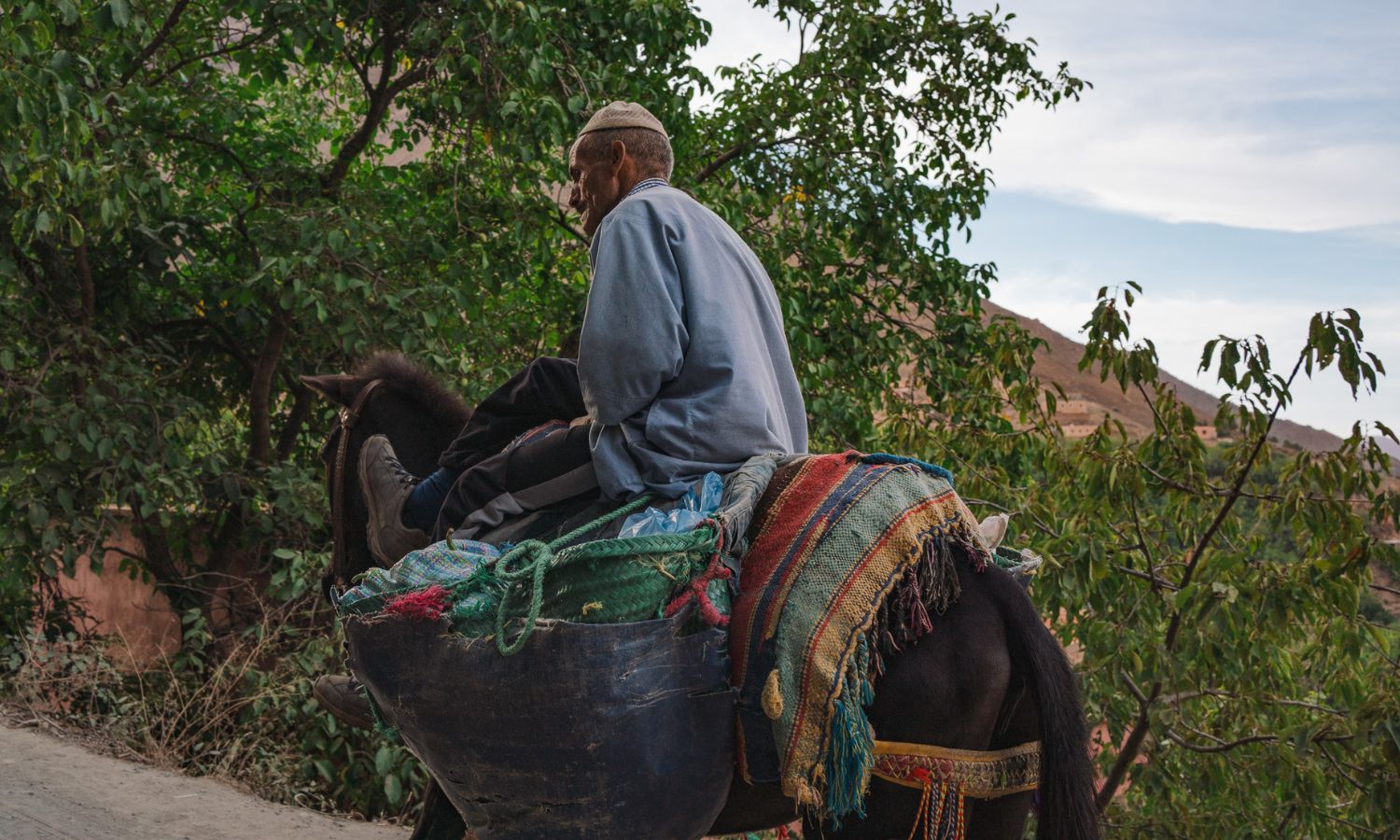
Embracing Berber Culture
The next day, we set out on a four-hour journey further into the mountains, reaching Imlil, a Berber village nestled at an elevation of 1,800 meters above sea level. The village is a labyrinth of narrow streets, stone-built homes, and terraced fields, all set against the majestic backdrop of the towering Atlas Mountains. I’m told it’s a favoured destination for trekkers and adventure enthusiasts who come to conquer Jebel Toubkal, the highest peak in North Africa. However, our purpose here is not a multi-day hike—Brahim has a different agenda in mind.
Throughout the trip he’s mentioned the Berber people. “The Amazigh (Berber) represent an indigenous North African ethnic group,” he explained. These communities are scattered across an extensive region encompassing Morocco, Algeria, Tunisia, Libya, Mali, Niger, Burkina Faso, as well as parts of Egypt and Mauritania.
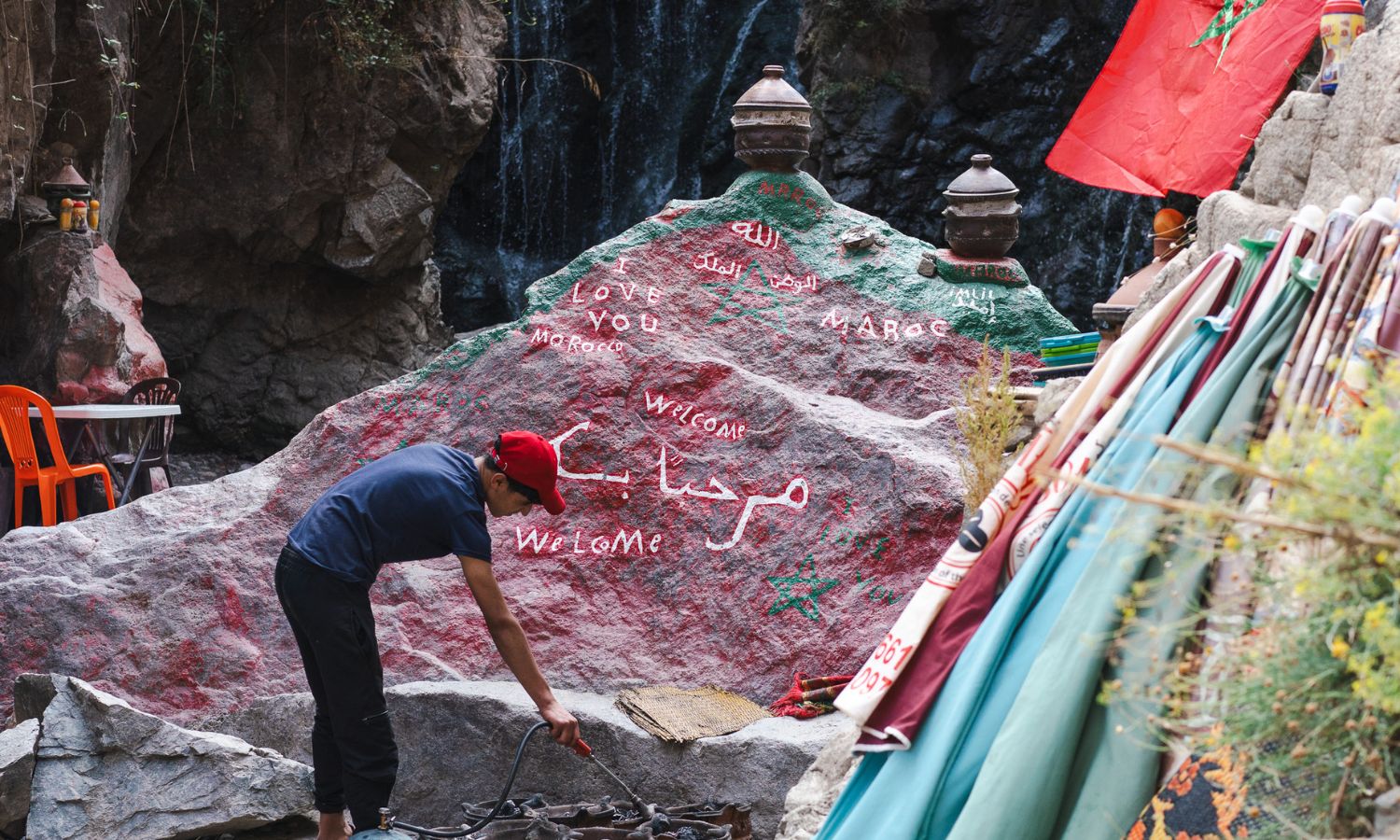
“The Berber people have deep roots in North Africa, with some historians suggesting their presence in the region dates back to prehistoric times,” added Brahim.
In the van, before we reach our hotel, Brahim tells us he’s organised a lunch inside a local’s home and a bread-making demonstration. Given every meal we’ve had on the trip has been in a local’s home, we didn’t think it would be any different.
The next day, we set out to lunch. Although, lunch was a three-hour hike away to the remote mountain village of Aroumd. We strolled by waterfalls with freshly squeezed orange juice bars beside them and villages seemingly frozen in time, stripped to the bare necessities. Even a sprinkling of school kids had followed us from Imlil to the top. According to Brahim, it can take as long as two hours for kids to walk home. He called them mountain goats because of their agility.
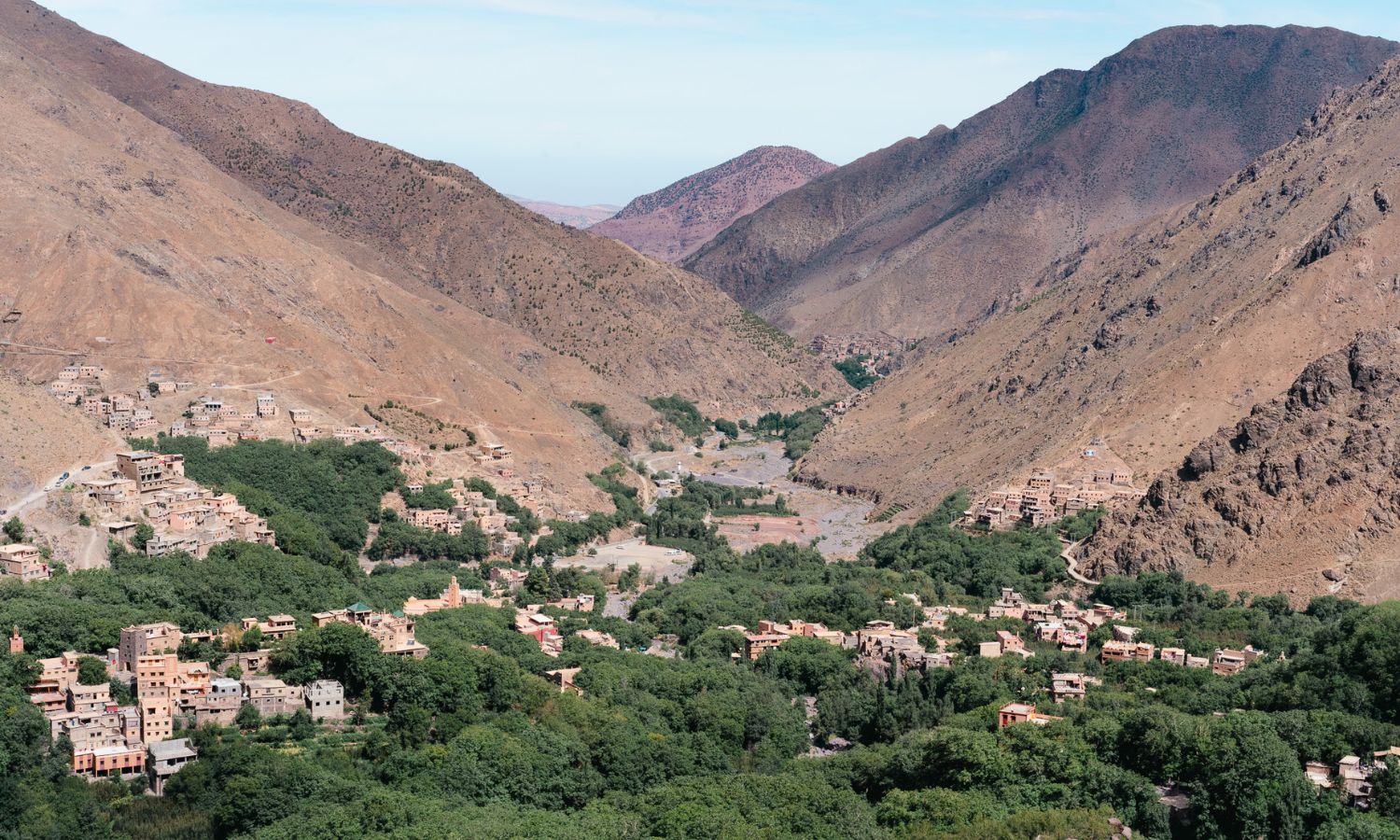
We finally reach the summit, where Aroumd is perched on a rocky outcrop. Brahim guides us to a home with one of the most breathtaking views in the world, overlooking the valley from a living room positioned 1,900 meters above sea level. We were greeted with milk and dates, which Malika’s husband encouraged us to drink from the bowl. “It’s a tradition,” he explains. Next to the table with the milk and dates was his brother, Hajin, a master tea maker. He skillfully pours fresh mint tea from above his head into a shotglass-like vessel below his knee and offers it to us as we take our seats.
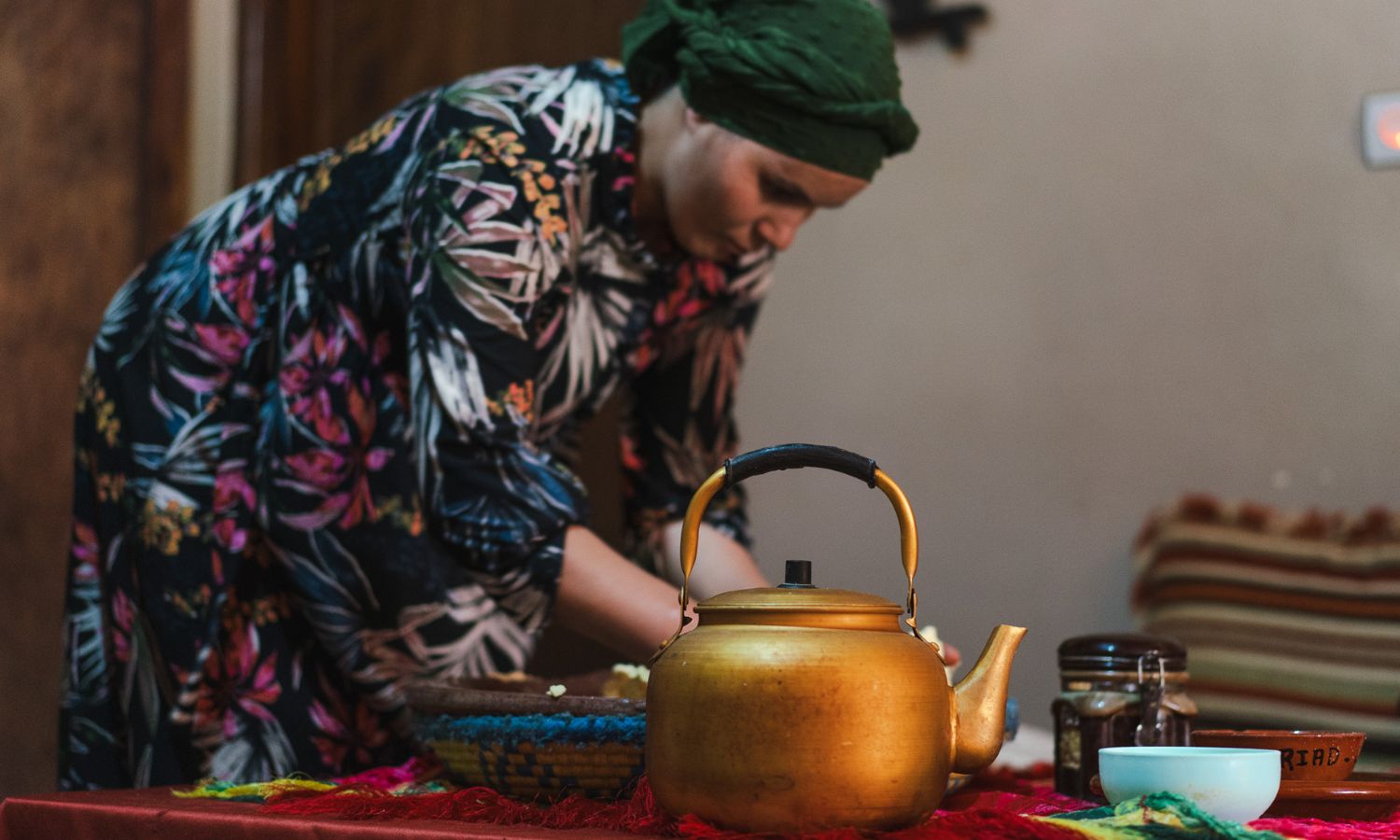
Malika arrives with a bowl and all the ingredients needed to create traditional Berber bread. With rapt attention, we watch as she deftly mixes the ingredients, kneads and stretches the dough, and then warmly invites us to try our hand at it. Some of us eagerly rise to the challenge, with Malika’s expert guidance making the process seem almost magical. In a mere ten minutes, she returns, presenting us with a bowl filled with charcoal-kissed flatbreads. This is followed by a procession of dishes and clay pots brimming with authentic Moroccan fare, including the standout—a vibrant Berber omelette. From what I could tell, it was packed with vegetables and spices and left me craving for more.
As we savour these delicious dishes, Hajin brews more tea, and we exchange farewells before heading back down the mountain on mule-back. A kind-hearted local villager who lent me his mule on account of my injured ankle shares intriguing insights into the renewed fascination with and growing appreciation of Berber culture, particularly in North African nations like Morocco and Algeria.
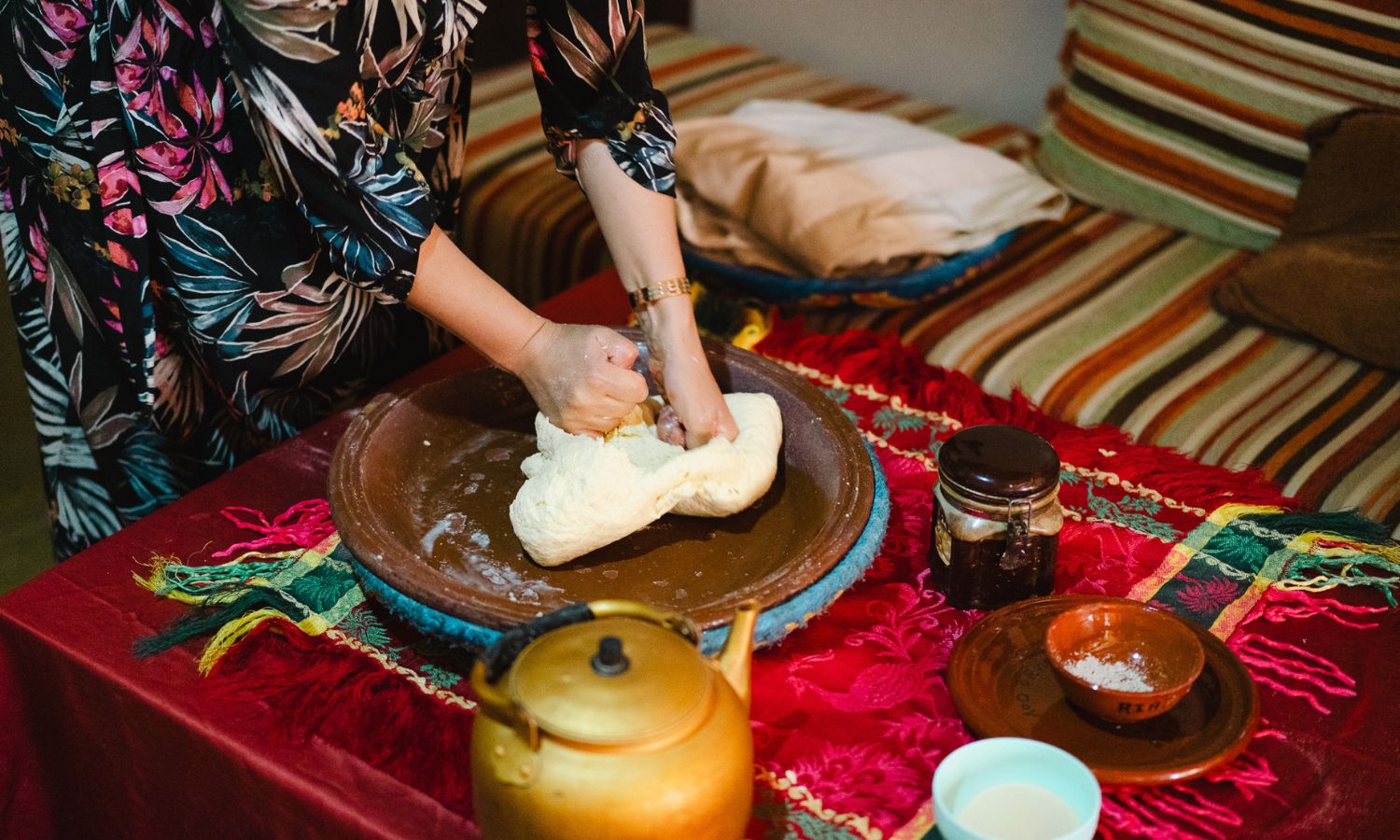
“It’s heartwarming to witness people’s commitment to preserving the language and traditions of the Berber people,” he remarks, pointing toward a symbol etched into the distant mountain peaks. “Do you see that symbol? It represents freedom.”
This symbol he references bears a single straight line down the centre, flanked by two intersecting semi-circles at each end, forming a representation akin to a person extending their arms and legs in a symbol synonymous with the spirit of the Berber people.
“It’s the sign of the Berber people.”
Related: This Moroccan BnB Above an Artist’s Studio Will Make You Want to Pursue Your Creative Dreams
Read more stories from The Latch and subscribe to our email newsletter.


